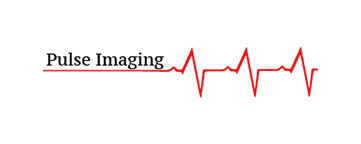Glucose Tolerance Test GTT
Also known as: The Oral glucose tolerance test OGTT.
What is a Glucose Tolerance Test?
The glucose tolerance test measures the body’s response to glucose intake. It is a method of diagnosing diabetes mellitus via checking insulin resistance.
Diabetes is a chronic metabolic disorder in which the body cannot process glucose effectively due to insulin deficiency or resistance. This results in high blood glucose levels. Early diagnosis is the key to effective treatment and reducing the risk associated with this disorder.
The glucose tolerance GGT/OGGT test is used to make an accurate diagnosis and help the physician start the treatment. It is a more significant indicator of diabetes than the test done via a glucometer.
In other words, this test shows whether a person’s body can metabolize a certain amount of glucose.
What is the test used for?
This test is used to diagnose type 1 diabetes mellitus, type 2 diabetes mellitus, and gestational diabetes. It involves taking multiple blood samples before and after the glucose intake with a time difference of two hours.
OGGT/GGT test is a particular test for diabetes. It becomes very easy to make the final diagnosis and start treatment with the help of this test.
Why and when do you need a Glucose Tolerance Test?
You need a Glucose tolerance test if you;
- Are overweight or obese
- Have a family history of diabetes
- Are hypertensive
- Have high triglycerides level in your blood
- Had gestational diabetes during your latest pregnancy
- Have hormonal imbalance
- Have a history of polycystic ovarian syndrome
- Delivered a baby weighing more than 9 pounds.
A shorter version of this test is done during the pregnancy between the 24th and 28th week to see if you have gestational diabetes. It is called the oral glucose challenge test.
What kind of sample is required for the test?
A blood sample is required to perform the test. For the blood sample, the laboratory technologist will take blood in the following order;
- They will tie your upper arm with a tourniquet and palpate the vein.
- After locating the vein, they clean the site with an alcohol swab
- Then gently insert the needle into the vein and draw the blood.
- They save that blood sample and label it
- After that, they will make you drink a mixture of glucose dissolved in water.
- You will give another blood sample in the same way after two hours.
- The results are then compared afterward.
During pregnancy, the test time is shorter. They take a second sample after 60 minutes.
Do you need to prepare for the test?
Let your doctor know what medications you are taking so he can advise you on which drugs need to be discontinued. Other than that, it is essential to eat and drink normally.
Are there any risks to this test?
This test has a few issues because some people have minor side effects after drinking the glucose solution. They may include:
- Nausea and vomiting
- Bloating
- Headache
- Low blood glucose, which is rare.
After a needle prick, one may face the problems like;
- Excessive bleeding if the patient has any other pathology
- Fainting due to needle phobia
- Infection at the site of injection
- Multiple attempts to find the vein that can result in a hematoma.
The other risks associated with this test sampling are minimal. You can get a tingling and stinging sensation while drawing blood. You also can get bruises, but they go away soon.
What do the test results mean?
Your blood glucose levels should rise after taking a glucose drink. Usually, it should return to normal as glucose moves inside the cell. If your blood glucose levels take a longer time to go back to normal, you could have diabetes mellitus.
The glucose levels are measured in milligrams per deciliter mg/dL. The reference values for the GTT test are:
- Below 140 mg/dL: Normal blood sugar.
- Between 140 and 199 mg/dL: Prediabetes
- 200 mg/dL or higher: Diabetes
If you are pregnant, your blood glucose of more than 140 mg/dL is abnormal. After this, your doctor will recommend taking a three-hour OGTT test. During this extended test, your blood is drawn at the beginning and after taking the glucose solution every hour.
Related Tests:
- Random blood glucose test
- Fasting blood glucose test
- HbA1c test
- Glucose screening test
Frequently ordered together
Glucose 2 Hour Post Prandial
Basic Metabolic Panel BMP
Glucose Fasting
Glucose Random
Comprehensive Metabolic Panel CMP
Glucose Tolerance Test GTT
Glucose Fasting & Postprandial-2 hour HR
GLUCOSE POSTPRANDIAL 1 HR
Glucose Fasting and Gestational 135 Cutoff
Glucose Plasma with Reflex
Glucose Fasting and Postprandial-1 Hour
Glucose Postprandial PP 2-Hour (75g)
Glucose Tolerance Test Gestational-4 Specimens (100g)
Glucose Gestational Screen 50g 135 Cutoff
Glucose Tolerance Test Gestational 3 Specimens (75g)
Glucose Gestational Screen 50g 140 Cutoff
Glucose Fasting and Gestational 140 Cutoff
14.00$
18.00$
14.00$
14.00$
21.00$
25.00$
17.00$
14.00$
17.00$
14.00$
17.00$
14.00$
25.00$
14.00$
21.00$
14.00$
17.00$














